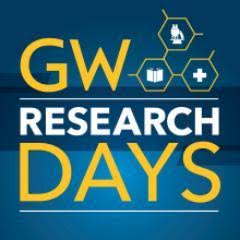 Last summer, Himmelfarb Library began offering users the choice of RefWorks Legacy and a new version of RefWorks. Himmelfarb Library continues to offer access to both RefWorks Legacy and RefWorks New and wanted to provide some information to help you differentiate these tools.
Last summer, Himmelfarb Library began offering users the choice of RefWorks Legacy and a new version of RefWorks. Himmelfarb Library continues to offer access to both RefWorks Legacy and RefWorks New and wanted to provide some information to help you differentiate these tools.
- Citation library
- Automatic export from Health Information @ Himmelfarb, CINAHL Plus with Full-Text, Scopus, and MEDLINE (Ovid), and easy import of citations from PubMed
- Customized folders
- Bibliography and in-text citation creation in APA, AMA, and hundreds of other citation formates
- Find Duplicates - Both the legacy and new RefWorks tools offer Find Duplicates functionality, but this feature works better and more consistently in RefWorks Legacy. If you're conducting a systematic review or other project which requires finding and eliminating duplicates, RefWorks Legacy is the better tool for you.
- Cite in Google Docs - Both the legacy and new RefWorks provide a Microsoft Word tool to create in-text citations and a bibliography, but RefWorks New provides a similar tool which works in Google Docs. If you would like to use RefWorks in Google Docs, RefWorks (New) is a better tool for you.
- To activate the RefWorks New tool in Google Docs: open a blank document and select “Add-ons” then “Get Add-ons” and search for “ProQuest RefWorks”. Once you find it, just click on the “free” button to add it to your account.
Himmelfarb Library will continue to offer RefWorks Legacy and RefWorks New through spring 2017 and will assess the feasibility of transitioning all users to RefWorks New in summer 2017.

 Are you ready for research day?
Are you ready for research day?
 Academic Medicine
Academic Medicine
 Stop by the library to take a study break and make a Valentine’s Day bookmark! It's perfect for your secret crush, your Best Study Friend, or to keep for yourself.
Stop by the library to take a study break and make a Valentine’s Day bookmark! It's perfect for your secret crush, your Best Study Friend, or to keep for yourself.
 The rise of open access publishing through legitimate publishing venues has opened the door for predatory publishers to take advantage of and profit from researchers seeking to publish the results of their research. Predatory publishers threaten the quality of medical literature via non-existent or sham peer-review processes, unstable publishing platforms which may disappear suddenly and inadequate and/or unqualified editorial oversight.
The rise of open access publishing through legitimate publishing venues has opened the door for predatory publishers to take advantage of and profit from researchers seeking to publish the results of their research. Predatory publishers threaten the quality of medical literature via non-existent or sham peer-review processes, unstable publishing platforms which may disappear suddenly and inadequate and/or unqualified editorial oversight. 